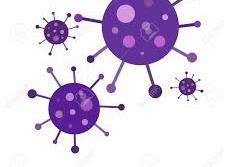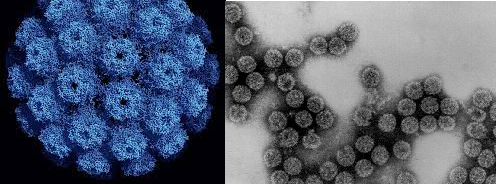Viroids are sub-viral infectious entities that infect plants. They are acellular infectious agents like the prions that lack the essential features of a virus; and which are capable of directing their own replication since they have small naked RNA as their genome. Unlike the prions which lack nucleic acids (inclusive of DNA and RNA), viroids contain single-stranded RNA molecules. Viroids are generally plant-pathogenic infectious particles that comprises of small, naked and circular ssRNA.
They lack protein coat since they are naked ssRNA molecules. The ssRNA depends entirely on the infected host cell for its replication since they lack genes that encode protein biosynthesis; and they rarely code for any protein molecule. Viroids can exist outside of their plant host cell unlike viruses. Viroids cause significant damage to crop plants. And this lead to considerable commercial damage to agricultural products, a factor that can impact negatively on food security.
Viroids are transmissible from plants to plants, and they are the smallest known pathogens that contain a nucleic acid molecule (particularly ssRNA).
Some of the plant diseases caused by viroids include: tomato apical stunt viroid (TASV), coconut cadang-cadang viroid (CCCV), potato spindle tuber viroid (PSTV), tomato bunchy top viroid (TBTV), cucumber pale fruit viroid (CPFV), citrus exocortis viroid (CEV) and hop stunt viroid (HSV) amongst others. Cocaviroid, Popsiviroid, Coleviroid, Hostuviroid and Pelamoviroid are some examples of viroid families or genera that cause disease in plants. The symptoms of plant infection by viroids is usually seen as plant discolouration, leave malfunction, fruit malfunction and stunted growth of particular crop plants.
The transmission of viroids amongst crop plants usually occur during crop propagation such as in grafting of plants and via other mechanical damage to the plant; and viroids can also be transmitted via pollen grains and seeds amongst plants. The mechanical damage that causes viroids to penetrate food crops or plants can be caused by farming implements such as cutlasses, hoes and diggers.
Some insects especially aphids are notorious in transmitting plant viruses (i.e. viroids) via insect bites; and this occurs when the insects feed on plant saps. Viroids are not known to cause disease in animals; and none have also been identified to infect bacterial cells like the bacteriophages.
References
Acheson N.H (2011). Fundamentals of Molecular Virology. Second edition. John Wiley and Sons Limited, West Sussex, United Kingdom.
Alan J. Cann (2005). Principles of Molecular Virology. 4th edition. Elsevier Academic Press, Burlington, MA, USA.
Alberts B, Bray D, Johnson A, Lewis J, Raff M, Roberts K and Walter P (1998). Essential Cell Biology: An Introduction to the Molecular Biology of the Cell. Third edition. Garland Publishing Inc., New York.
Barrett J.T (1998). Microbiology and Immunology Concepts. Philadelphia, PA: Lippincott-Raven Publishers. USA.
Black, J.G. (2008). Microbiology: Principles and Explorations (7th ed.). Hoboken, NJ: J. Wiley & Sons.
Brian W.J Mahy and Mark H.C van Regenmortel (2010). Desk Encyclopedia of Human and Medical Virology. Elsevier Academic Press, San Diego, USA.
Brooks G.F., Butel J.S and Morse S.A (2004). Medical Microbiology, 23rd edition. McGraw Hill Publishers. USA.
Cann A.J (2011). Principles of Molecular Virology. Fifth edition. Academic Press, San Diego, United States.
Carter J and Saunders V (2013). Virology: Principles and Applications. Second edition. Wiley-Blackwell, New Jersey, United States.
Champoux J.J, Neidhardt F.C, Drew W.L and Plorde J.J (2004). Sherris Medical Microbiology: An Introduction to Infectious Diseases. 4th edition. McGraw Hill Companies Inc, USA.
Dimmock N (2015). Introduction to Modern Virology. Seventh edition. Wiley-Blackwell, New Jersey, United States.
Dimmock N.J, Easton A.J and Leppard K.N (2001). Introduction to modern virology. 5th edition. Blackwell Science publishers. Oxford, UK.
Discover more from Microbiology Class
Subscribe to get the latest posts sent to your email.





